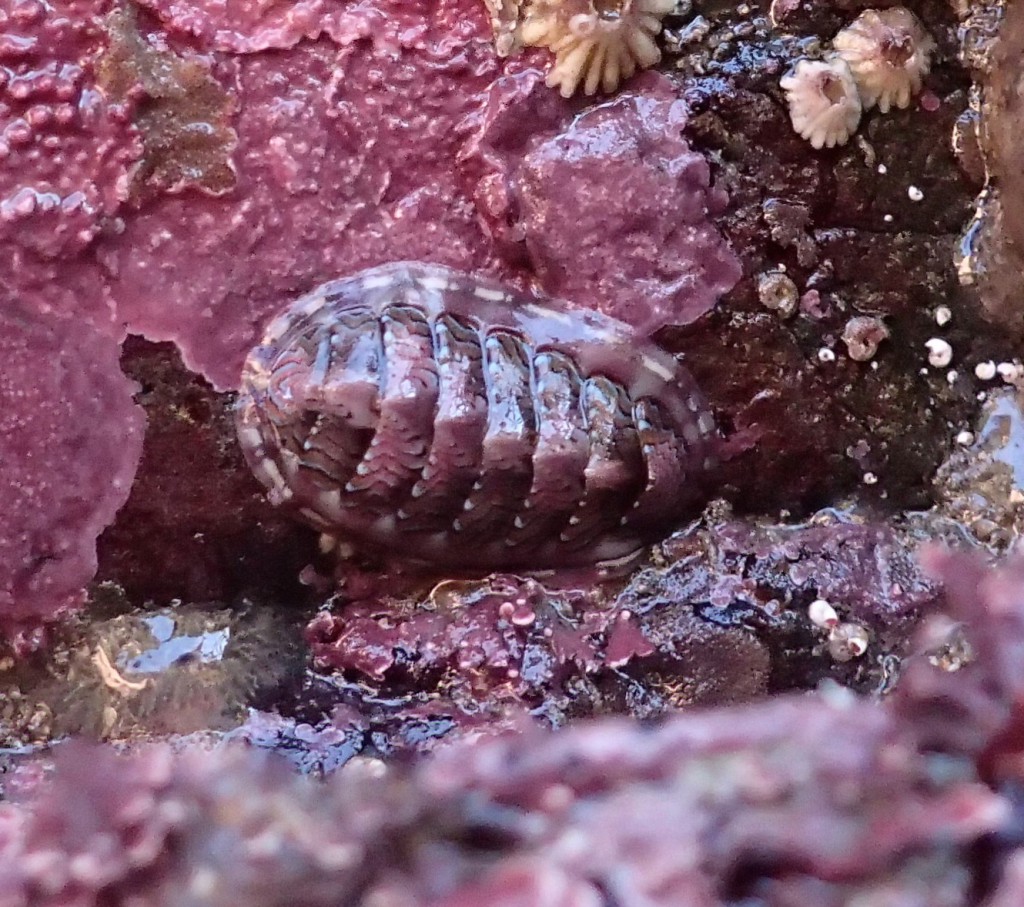The temperate rocky intertidal is about as colorful a natural place as I’ve seen. Much of the color comes from algae, and in the spring and early summer the eye can be overwhelmed by the emerald greenness of the overall landscape due to Phyllospadix (surf grass, a true flowering plant) and Ulva (sea lettuce, an alga). However, close observation of any tidepool reveals that the animals themselves, as well as smaller algal species, are at least as colorful as the more conspicuous surf grass and sea lettuce.
Take the color pink, for example. Not one of my personal favorites, but it is very striking and sort of in-your-face in the tidepools. Maybe that’s because it contrasts so strongly with the green of the surf grass. In any case, coralline algae contribute most of the pink on a larger scale. These algae grow both as encrusting sheets and as upright branching forms. They have calcium carbonate in their cell walls, giving them a crunchy texture that is unlike that of other algae. They grow both on large stationary rocks and smaller, easily tumbled and turned over rocks.
A typical coralline “wall” looks like this:

© Allison J. Gong
Mind you, this “wall” is a bit larger than my outspread hand. The irregular pink blotches are the coralline algae. Near the center of the photo is a chiton of the genus Tonicella; its pink color comes from its diet, which is the same coralline alga on which it lives. The most conspicuous non-pink items on this particular bit of rock are the amorphous colonial sea squirt (shiny beige snot-like stuff) and the white barnacles on the right.
What really caught my eye today were the sea slugs Okenia rosacea, known commonly as the Hopkins’ Rose nudibranch. Now, it is very easy to love the nudibranchs because they are undeniably beautiful. The fact of the matter is that they are predators, and some of them eat my beloved hydroids, but that’s a matter for another post. Today I saw dozens of these bright pink blotches dotting the intertidal, both in and out of the water:

© Allison J. Gong

© Allison J. Gong
Only when the animal is immersed can you see that it is a slug and not a pink anemone such as Epiactis prolifera, which I’ve seen in the exact shade of pink. But anemones don’t crawl around quite like this:
https://www.youtube.com/watch?v=0iBH0ACh1d0
Whenever I see O. rosacea I automatically look for its prey, the pink bryozoan Eurystomella bilabiata. Lo and behold, I found it! The bryozoan itself is also pretty.

© Allison J. Gong
Can you distinguish between the coralline algae and the pink bryozoan in the photo? Is it shape or color that gives it away? If you had to explain the difference in appearance between these two pink organisms to a blind person, how would you do it?
